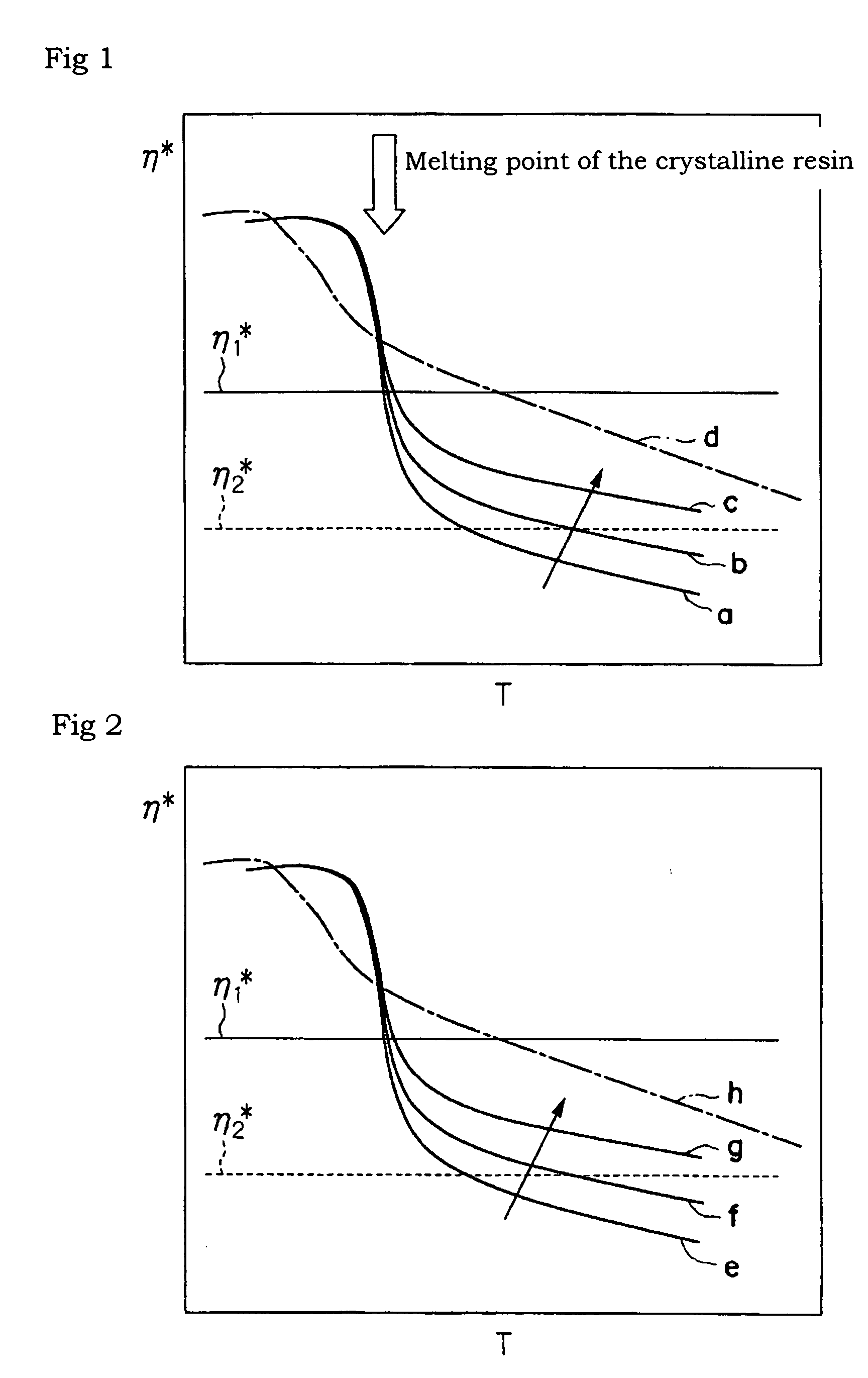Electrophotographic toner, method for producing the same, electrophotographic developer, and image forming method
a technology of electrophotographic developer and toner, applied in the direction of electrographic process apparatus, instruments, developers, etc., can solve the problems of narrow fixing temperature range, poor release properties, and insufficient development performan
- Summary
- Abstract
- Description
- Claims
- Application Information
AI Technical Summary
Benefits of technology
Problems solved by technology
Method used
Image
Examples
examples 4 and 5
[0117] In these examples, toners having sea-island structures are described.
[0118] The non-crystalline resin G liquid dispersion, crystalline resin liquid dispersion, coloring agent liquid dispersion and releasing agent liquid dispersion, in respective amounts shown in Table 2, are charged into a round flask made of stainless steel. While a homogenizer (trade name: ULTRA-TURRAX T50, manufactured by IKA Co.) is used to mix and disperse the components sufficiently in the mixed liquid dispersions, a coagulant is added thereto. Thereafter, the round flask is kept at 52° C. in a heating oil bath for 60 minutes while stirred. In this way, an aggregated particle liquid dispersion is prepared. Next, to this aggregated particle liquid dispersion is added an aqueous sodium hydroxide solution (0.5 mole / liter) so as to adjust the pH of the liquid dispersion to 7.5. Thereafter, the flask is sealed up. The liquid dispersion is kept at 90° C. for 1 hour while a magnetic force seal is used to stir...
example 6
[0120] A core-shell structure toner is produced in the same way as in Example 1 except that the crystalline resin A is changed to the crystalline resin B and the amount of the coagulant is increased.
example 7
[0121] In this example, which involves a color toner, a cyan toner is produced in the same way as in Example 1 except that a cyan pigment is used instead of the carbon black. A developer is produced in the same way as in Examples 1 to 3.
[0122] This developer is used to evaluate toner properties and fixing properties thereof in the same way as in Example 1. The results are shown in Table 4.
PUM
 Login to View More
Login to View More Abstract
Description
Claims
Application Information
 Login to View More
Login to View More - R&D
- Intellectual Property
- Life Sciences
- Materials
- Tech Scout
- Unparalleled Data Quality
- Higher Quality Content
- 60% Fewer Hallucinations
Browse by: Latest US Patents, China's latest patents, Technical Efficacy Thesaurus, Application Domain, Technology Topic, Popular Technical Reports.
© 2025 PatSnap. All rights reserved.Legal|Privacy policy|Modern Slavery Act Transparency Statement|Sitemap|About US| Contact US: help@patsnap.com


